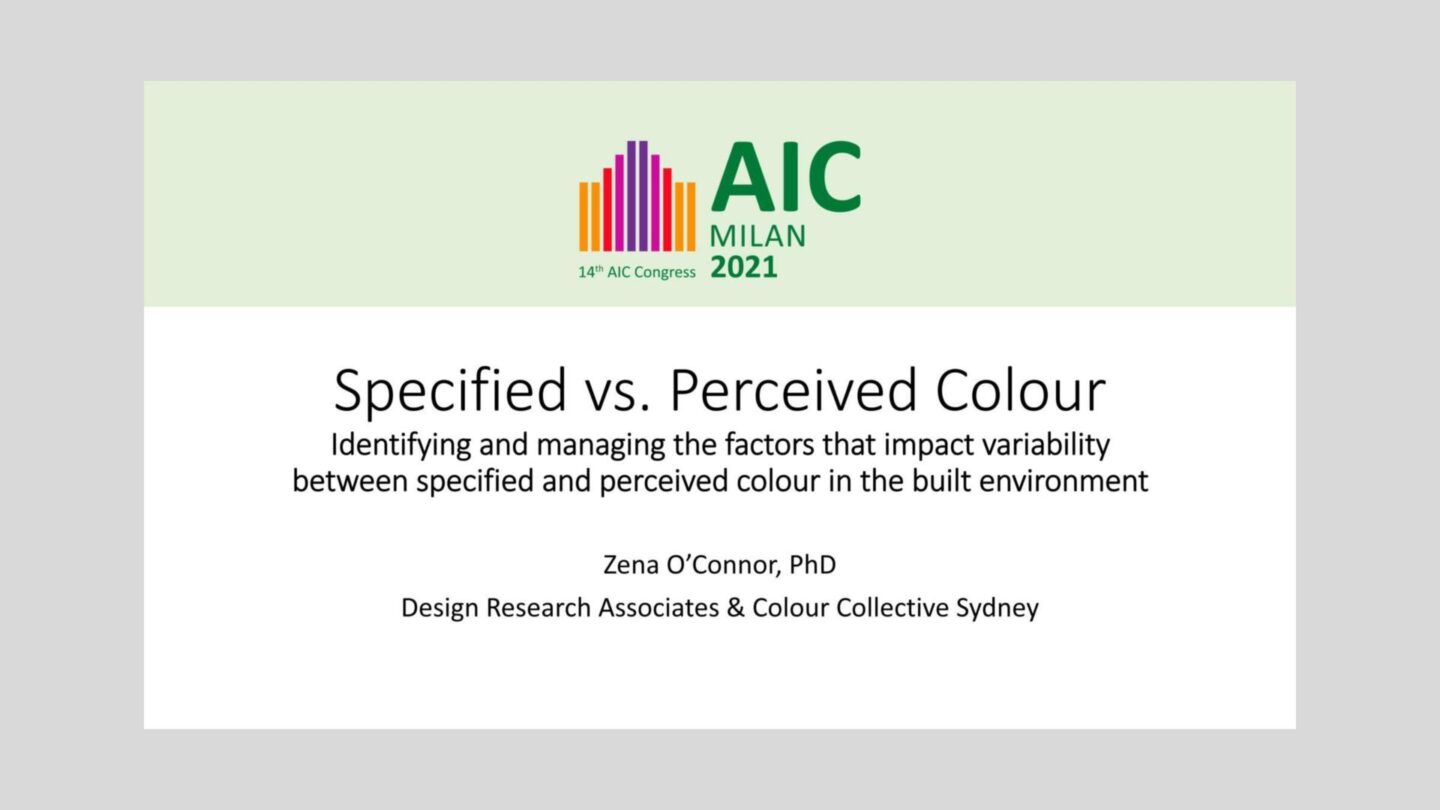
I was invited to present this paper at the Environmental Colour Design Group session at the AIC2021 – Milan conference, 30 August to 3 September. In addition, I presented ‘Data visualization: The power and persuasive capacity of colour’ plus I was appointed to the scientific peer-review committee for AIC2021.
The AIC conference is held annually and is the main opportunity for members of the International Colour Association to gather and exchange information.
Abstract – Specified vs. Perceived colour: Identifying and managing the factors that impact variability between specified colour and perceived colour in the built environment
In the built environment, colour scheme specification for both interior spaces and exterior building façades can be problematic. Not simply in terms of aesthetics, functionality of client aims, but due to the range of factors that can directly impact or influence perception of specified colour, creating a situation where perceived colour differs from specified colour.
Aside from the complexity of colour and human perception of colour, there are various factors that impact perception of colour in respect to interior spaces and exterior façades. These factors, which impact colour scheme development and need to be considered during the development process, include contextual colour, simultaneous contrast effect, as well as variations in ambient lighting. This discussion focuses on strategies to manage and/or mitigate the factors that impact specified colour. These strategies will be examined with reference to recent project case studies.
Abstract – Data Visualization: The power and persuasive capacity of colour
Data visualizations are a branch of visual communications common across academic, business, educational, and political sectors. They are generally purpose-driven and, while the overall goal it to convey information, this intention is underpinned by the aims and agenda of the author.
Design elements and including colour and contrast play integral roles in data visualization and are used to highlight key information. In this context, the mechanics of visual perception in tandem with cognitive processing and critical analysis influences how an audience perceives, engages, understands, and acts upon the information contained within data visualizations.
This paper examines the power and persuasive capacity of color in data visualization and explores the ways it impacts how information may be skewed, depending on an author’s aims and agenda. Color and contrast have the capacity to highlight information or misrepresent and mislead, and flow-on effects relate to the ways in which the audience evaluates and responds to information embedded in data visualizations.
